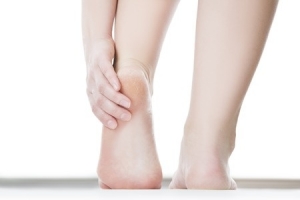Connect With Us
Blogs
Displaying items by tag: heel spurs
Helpful Hints for Hikers
Hiking is a great way to stay in shape, spend time with family and friends, and appreciate the beauty of nature. At Superior Foot & Ankle Care Center, we want our patients to keep their feet safe while enjoying this activity. Below are some recommendations before you hit the trail.
Shoe Sense—it all starts with the right hiking shoes or boots. The terrain on trails can be steep, uneven, and unstable. It’s essential that you have the proper foot gear. Get professionally fitted and buy quality-hiking shoes that protect your feet from moisture, provide good support and shock absorption, and have a tread to help prevent slips and slides. If you have chronic foot problem such as weak ankles or heel spurs, see our podiatrists, Dr. Victoria M. Foley or Dr. Constance Ornelas get recommendations for shoe styles and other modifications that will best accommodate your condition.
Proper Planning—if you are planning to hike on a trail you’ve never been on, study a map to determine the length of the trail, whether it’s “in and out” or a circle, the elevation, and how the trail is maintained. Take into consideration your current physical condition and don’t overdo it. Warm-up and stretch before starting a hike to avoid injuries like Achilles tendonitis.
Knapsack Know-How—in addition to granola bars and plenty of water (which will not only keep you hydrated but also reduce the chances of painful swelling in your feet and ankles), you should include a few other items in your backpack. Blisters, though small, can ruin a hike. Pack moleskin and use it as soon as you notice rubbing or a sore spot on your foot. It’s also a good idea to have wraps or elastic bandages in case of an ankle sprain and bandages and antibiotic ointment for minor scrapes or insect bites.
Foot and ankle injuries require immediate medical attention. If you fall, twist an ankle, or injure your feet or ankles in any way while hiking, contact our Long Beach office in Douglas Park, CA by calling (562) 420-9800 as soon as possible. Until you can get in to see us, follow the RICE regimen: Rest, Ice, Compression, and Elevation.
5 Causes of Heel Pain
When your heel hurts, we at Superior Foot & Ankle Center know how limiting that can be on your day to day life. When every step is painful it’s difficult to walk, let alone work, shop, take care of children and household tasks or do any of the many other activities we normally take for granted. While resting your foot may temporarily ease heel soreness, permanent relief requires discovery of the source of the pain and developing a treatment plan that will address the root cause. Below are some common reasons for heel pain:
- Plantar fasciitis/heel spurs—this disorder is one of the most frequent reasons why patients experience heel pain. It occurs when the plantar fascia—a long band of tissue that stretches from your toes to your heel on the bottom of your foot—becomes injured or inflamed. If a patient is prone to plantar fasciitis they also have a greater likelihood of developing heel spurs, which are calcium deposits that build up in the heel and cause additional pain.
- The Wrong Shoes—sometimes eliminating heel pain is as simple as changing your shoes. Shoes that don’t provide adequate arch support or that position your foot in an abnormal way can inadvertently put extra pressure on your heel.
- Arch Issues—having flat feet or high arches alters the correct alignment of your feet with heel pain as a possible result.
- Calluses—these patches of hard, dry skin that appear on the surface of your heel are actually a sign of an internal irritation. The excessive pressure put on the heel by wearing high heels, being overweight, an altered gait or even the loss of the natural fat padding on your heel can all cause heel irritation which reveals itself in the callus.
- Nerve Problems—with disorders such as tarsal tunnel syndrome or Baxter neuropathy a compressed nerve in the foot or ankle can produce excruciating pain in the heel. If the pain is felt in both heels there is also a chance that the nerve issue is further up in the body in the spinal column.
Our podiatrists, Dr. Victoria Foley and Dr. Constance Ornelas will need to do a complete examination of your foot, ankle, and heel to diagnose the source of your heel pain. X-rays and other imaging studies may also be ordered. Once a diagnosis is confirmed, the foot doctor will be able to prescribe the correct treatment plan to resolve your heel pain. If you are experiencing pain in your heel, contact our Long Beach office by calling (562) 420-9800 today.


